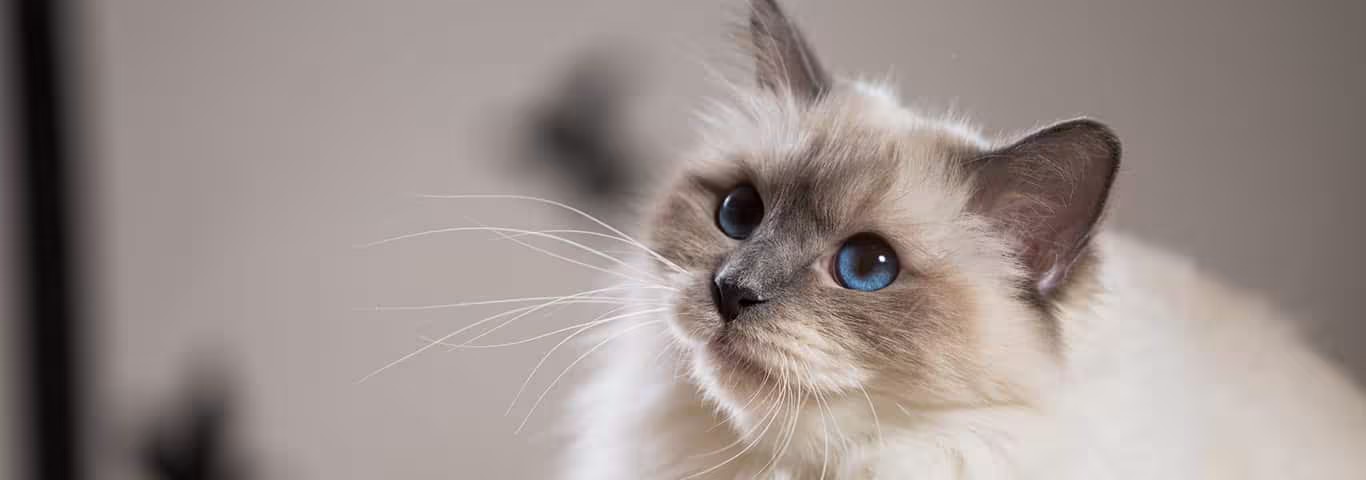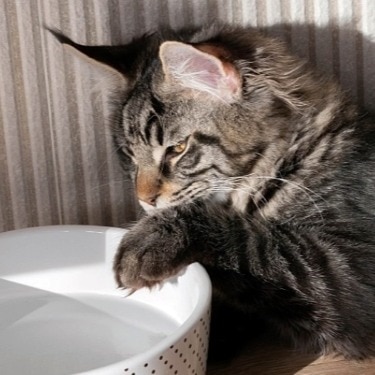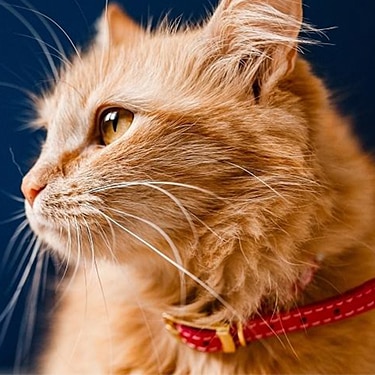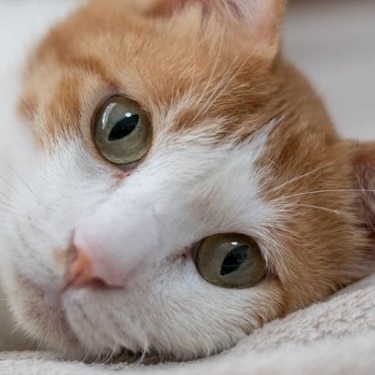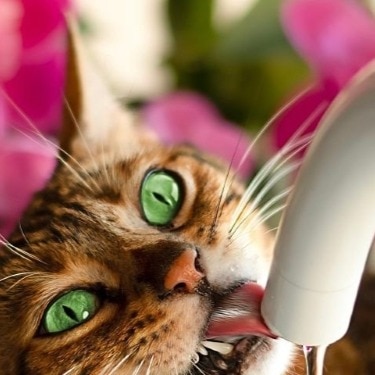The Birman has very unusual markings. She looks like a pointed cat with four white feet (mitted) and deep blue eyes. The head is actually triangular, but the Birman has such a broad skull that the face can appear almost rounded. The Birman has a Roman nose and medium-sized ears.
The fur of the Birman is medium long, and soft and silky. It tends not to mat and is easy to care for.
The Birman is a more private breed and tends to attach herself to one person. Some Birmans can show a bit of jealousy if their parent does not pay attention to them. While they are territorial, they are not aggressive.
Being a larger cat and somewhat stocky to begin with, Birmans can become overweight. Daily exercise can help keep her in good physical condition.
In addition, groom your Birman daily to prevent matting of the fine fur.
The Temple of Lao-Tsun was built in Asia for the worship of the goddess Tsun-Kyan-Kse. She was a golden goddess with sapphire blue eyes. Mun-Ha, one of the priests of the temple, would kneel before the statue of the goddess with the white temple cat named Sinh sitting beside him. One night, raiders came into to the temple as Mun-Ha was worshipping and killed him. As Mun-Ha was dying, Sinh put his feet on Mun-Ha and faced the goddess. His body immediately turned from white to gold, and his eyes turned blue, just like those of the goddess. His legs turned brown, but where his feet touched his master, they remained white as a symbol of purity. All the other cats in and around the temple also changed in this way. Sinh stayed with his master for the next seven days when he too died, and Sinh carried the soul of Mun-Ha to paradise. To this day, it is believed that whenever one of the sacred temple cats dies, the soul of a priest accompanies the soul of the cat to paradise.
When the temple was raided again in 1919, Auguste Pavie and Major Gordon Russell helped the temple priests. As a gesture of thanks, the priests gave these men a breeding pair of Birmans, which were the foundation of the breed in the west. Both men were then living in France. The Birmans did very well for a while but by the end of the Second World War, only one pair of Birmans was left. Once again, hard work had to work to keep this breed alive.
In the 1960s, the first Birmans were imported into Britain. Kittens from these breeding programs were exported to other countries all over the world. In 1966, the Birman was recognized in Britain and in 1967, the Birman became a recognized breed in the United States. In Europe, the breed goes by its traditional name, the Sacred Cat of Burma.
Adopt a pet. Change a life.
Are you prepared to adopt a pet? Use these tools to make sure you are ready for the commitment.
Adopt a pet. Change a life.
Are you prepared to adopt a pet? Use these tools to make sure you are ready for the commitment.












